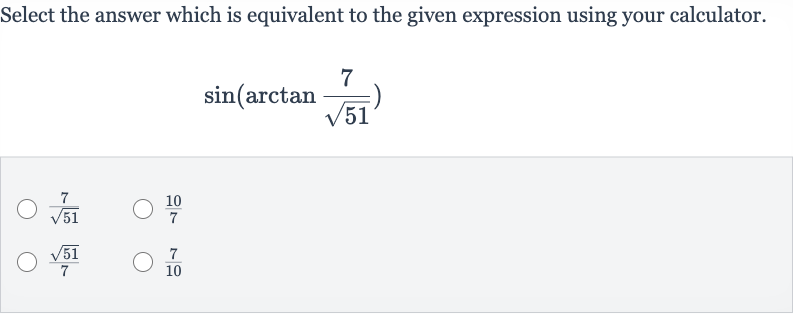Full solution
Q. Select the answer which is equivalent to the given expression using your calculator.
- Understand Relationship: Understand the relationship between the sine function and the arctangent function.The sine of an angle in a right triangle is the ratio of the opposite side to the hypotenuse. The arctangent of a value gives us an angle whose tangent is that value. The tangent of an angle is the ratio of the opposite side to the adjacent side. Therefore, is the sine of an angle whose tangent is .
- Visualize Triangle: Visualize the right triangle where the angle we're considering is the one whose tangent is . Let's call this angle . By definition of the tangent function, . So, in a right triangle, if the opposite side is and the adjacent side is , then .
- Calculate Hypotenuse: Calculate the hypotenuse of the triangle using the Pythagorean theorem.The Pythagorean theorem states that in a right triangle, the square of the hypotenuse is equal to the sum of the squares of the other two sides and : . Here, and , so .
- Perform Calculation: Perform the calculation for the hypotenuse. . Therefore, .
- Use Sine Function: Use the definition of the sine function to find . Since , and we have found the opposite side to be and the hypotenuse to be , .
- Conclude Solution: Conclude the solution.The value of is equivalent to the sine of the angle , which we found to be .
More problems from Operations with rational exponents
QuestionGet tutor help
QuestionGet tutor help

